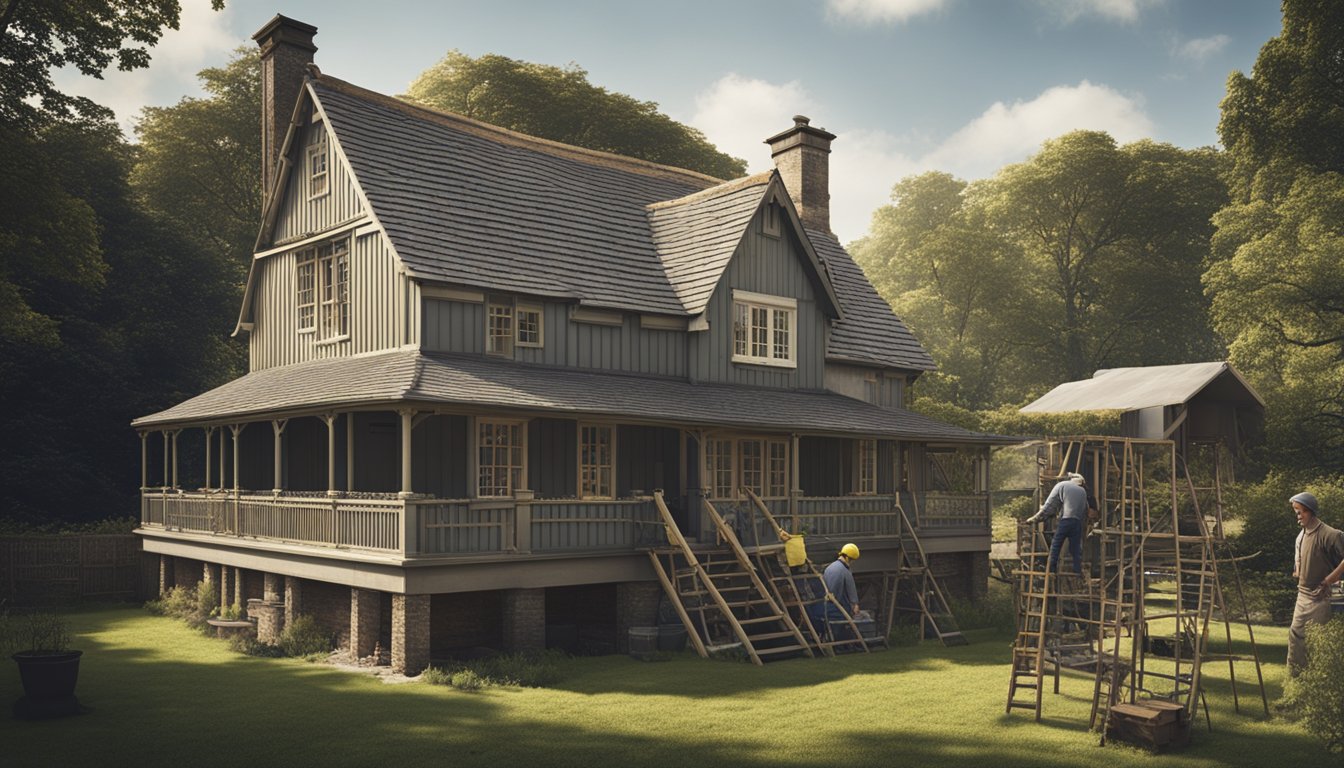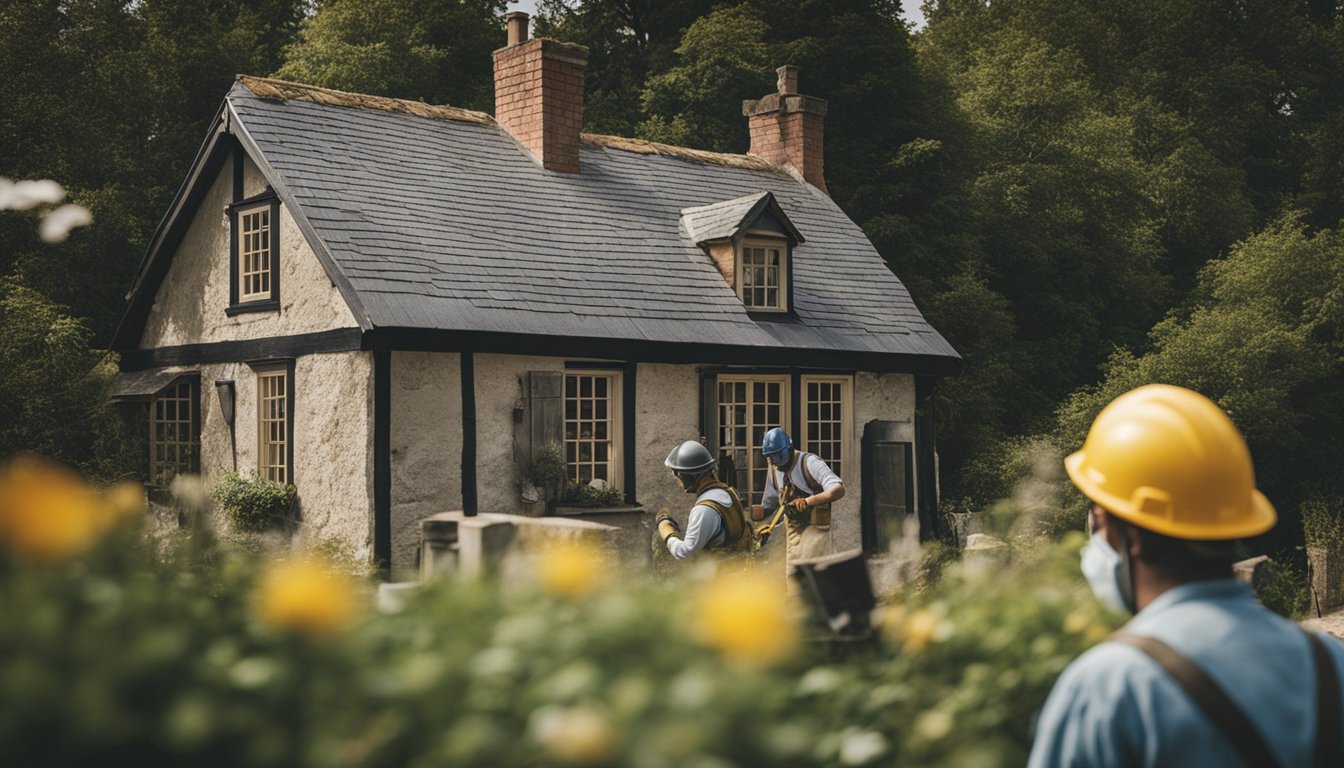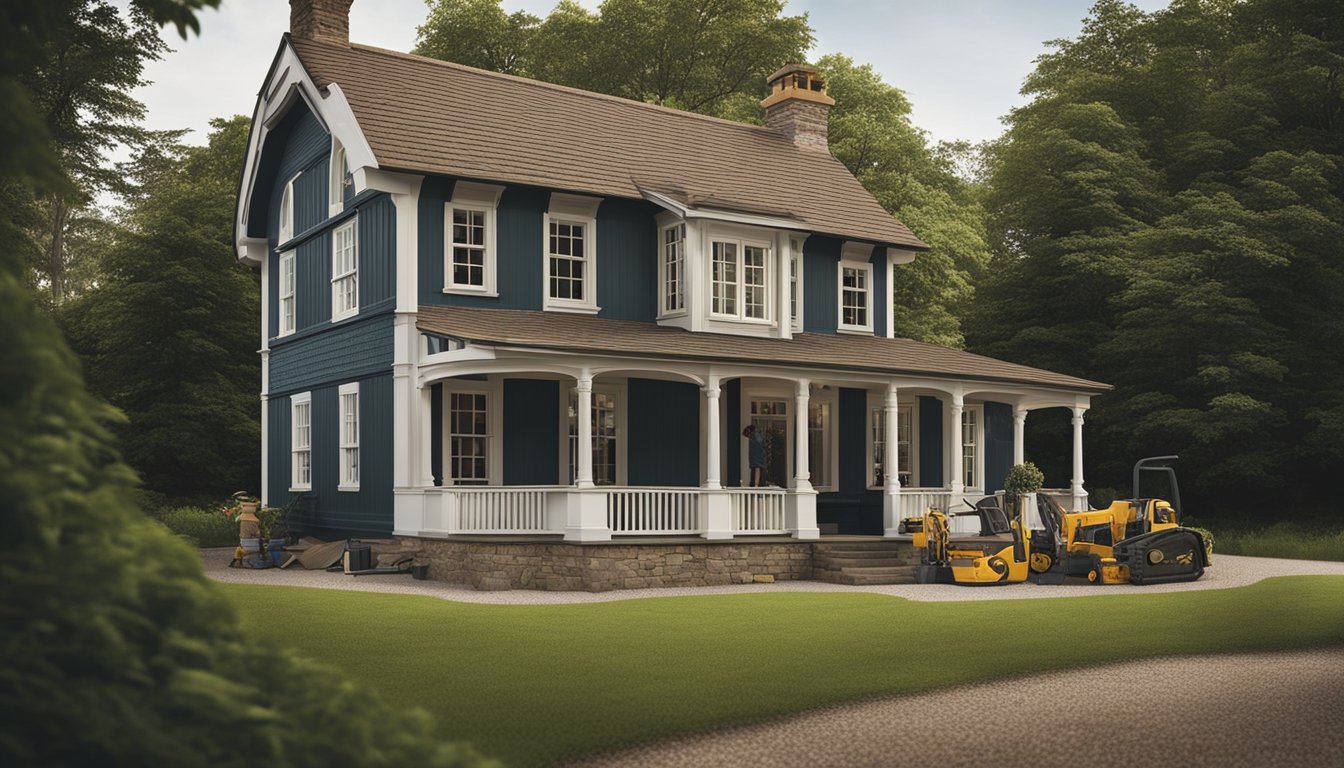Late updated: 13 Feb 2025 10:02
Written by: Daniel Harper
How To Safely Renovate A Historic Cottage: Essential Tips and Guidelines
Renovating a historic cottage can be both an exciting and daunting endeavour. These charming homes, with their unique architectural features and rich histories, require a careful balance of preserving original charm while introducing modern amenities. The key to safely renovating a historic cottage is meticulous planning and respecting its historical significance. Our comprehensive guide aims to help homeowners navigate this delicate process, ensuring that your cottage retains its historical integrity while becoming a comfortable modern space.

We must understand the importance of the materials and techniques used in the original construction. Historic cottages often feature localised materials and traditional building methods, which may require specialised craftsmanship to repair or replicate. By paying attention to these details, we can ensure that any updates or additions harmonise with the cottage's original design, maintaining continuity between past and present.
Once we've established a clear plan that respects the historic integrity of our cottage, the renovation work can begin in earnest. It's crucial to tackle one project at a time to avoid overwhelming the structure and our resources. Our journey will be filled with the satisfaction of breathing new life into our beloved home, transforming it into a place where both history and modernity coexist beautifully.
Key Takeaways
- Plan thoroughly and respect historical significance.
- Use period-appropriate materials and techniques.
- Execute projects one at a time to ensure quality.
Planning Your Renovation Project
Planning is essential when renovating a historic cottage. We need to focus on architectural significance, legal permissions, and assembling a skilled team to ensure project success.
Understanding Cottage Architecture and History
It's vital to appreciate the historical and architectural elements specific to our cottage. We should investigate its original fabric, construction techniques, and any alterations made over time.
Knowing these details helps in making decisions that respect the cottage's heritage. Local archives and historical societies can be excellent resources for uncovering this information. We may discover that our cottage is part of a conservation area, which often dictates specific renovation requirements. Understanding historical significance ensures we preserve and enhance the cottage's charm appropriately.
Securing Permissions and Approvals
Renovating a cottage may require permissions, especially if it's a listed building. We must check with local authorities to determine the specific requirements. Our project could be subject to restrictions aimed at preserving the area's historical and architectural integrity.
Acquiring approval might involve submitting detailed plans and sometimes consulting with specialists in conservation. By ensuring all legal aspects are in order, we avoid potential fines or project delays. It's beneficial to engage with council officials early in the process, as they can provide guidance on the necessary paperwork and procedures.
Choosing the Right Professionals
Selecting experienced professionals is crucial for a seamless renovation. An architect with expertise in historic structures can help us retain the cottage’s unique features while modernising it for a comfortable lifestyle.
We might also need engineers to address structural aspects and specialist contractors familiar with traditional building methods. When interviewing potential team members, we should ask for references and previous work examples, particularly their experience with similar projects. Their understanding of the delicate balance between innovation and preservation can be invaluable for a successful renovation.
Executing the Renovation Work

In renovating a historic cottage, managing dampness, preserving interior character, and modernising infrastructure are vital steps. Each aspect requires careful consideration to ensure the property's longevity and respect for its historical significance.
Assessing and Addressing Dampness
Dampness is a common issue in old buildings. We must first conduct a thorough assessment to identify affected areas using moisture meters and visual inspections. It's crucial to determine the cause, whether it's rising damp or poor ventilation.
Once identified, appropriate solutions can include improving drainage systems, repointing walls with breathable materials, and installing dehumidifiers. Employing underfloor heating will help reduce moisture build-up. It's essential to use historically sympathetic materials to maintain the structural integrity and appearance of the cottage. This tailored approach ensures durability while protecting the property's historical essence.
Preserving Interior Character
Preserving the interior character of a historic cottage involves delicate choices. We should prioritise original elements such as exposed beams, low ceilings, and vintage fireplaces. These features embody the history and charm of the cottage.
Furniture and interior design should complement existing features. For instance, choosing period-appropriate fixtures and fittings maintains historical accuracy. Paint colours and wall treatments that reflect the era can enhance the appeal. Combining traditional aesthetics with essential modern comforts ensures the cottage retains its unique character while serving contemporary needs.
Modernising Infrastructure
Modernising the infrastructure of a historic cottage requires balancing historical preservation with the demands of modern living. Plumbing and electrical systems often need updating to meet current safety standards. Carefully planned upgrades ensure efficiency without compromising the cottage’s charm.
Lighting plays a key role in enhancing both functionality and aesthetics. Modern solutions, such as LED fittings, can be integrated subtly. Attention should also be given to energy-efficient heating solutions. When replacing materials, it’s essential to choose ones that are compatible with existing structures to maintain authenticity. These updates, executed cautiously, will provide the comfort of modern amenities while honouring the cottage's historical roots.
Frequently Asked Questions

In this section, we address concerns about the rules, financial help options, experts, tax perks, permissible alterations, and key practices in historic cottage renovations. These topics cover various aspects vital for anyone planning to renovate an old property.
What are the regulations governing the renovation of historic homes?
When renovating a historic cottage, it is important to be aware of planning laws protecting historic buildings and conservation areas. Contact the local council for specific guidelines and ensure that your renovation team is knowledgeable about these requirements to avoid complications.
How does one apply for grants available for historic cottage renovations?
To apply for renovation grants, research government and heritage organisation programmes. Often, detailed proposals highlighting the preservation value and methods for maintaining original features are required. It is beneficial to consult with specialists who understand the criteria for securing such funding.
Where can I find specialised contractors for historic property renovations?
Finding the right contractors involves looking for those with proven experience in historic renovations. Recommendations from local heritage groups or searching databases of qualified professionals in the field can help ensure you select a team adept at handling the unique challenges these properties present.
What tax incentives exist for owners of listed historic properties?
Owners of listed properties may be eligible for tax incentives designed to ease the financial burden of renovations. Investigate schemes such as VAT reductions on certain repair and maintenance work. Consulting with financial advisors experienced in this area can provide a clearer understanding of your entitlements.
To what extent can the interior of a listed building be altered during renovation?
Interior alterations depend on the property's listing grade and local authority permissions. While some changes are possible to improve functionality, maintaining historical significance is critical. It is advisable to collaborate with conservation officers to ensure compliance with necessary regulations.
What best practices should be followed in restoring a property over a century old?
For properties over a century old, using traditional materials and techniques helps protect structural integrity and historical importance. Assess the building's needs with input from architects specialised in historic preservation. Regular maintenance and careful restoration align with best practices to extend the life and beauty of these homes.
